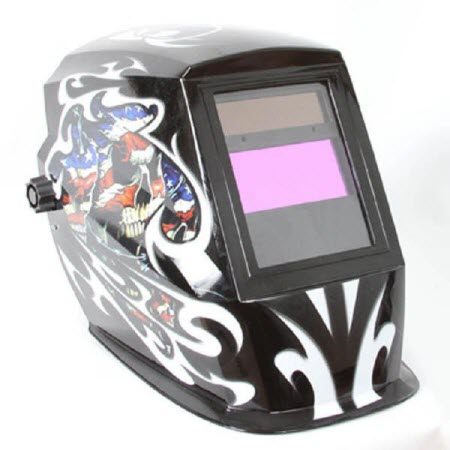As a metalworker, safety should always be your top priority. One of the essential safety equipment that every metalworker should invest in is a welding helmet. Welding helmets are designed to protect you from the hazards that come with welding, including harmful UV rays, heat, debris, fumes, and smoke. In this article, we will explore why welding helmets are essential for metalworkers and factors to consider when choosing a welding helmet.
Introduction: The Importance of Welding Helmets
Welding helmets are an essential piece of safety equipment for metalworkers. They are designed to protect your face, eyes, and neck from the hazards that come with welding. These hazards include UV radiation, intense heat, sparks, and debris. Welding helmets also protect you from inhaling fumes and smoke that are produced during the welding process. Investing in a good-quality welding helmet is not only necessary for your safety but also ensures that you can work comfortably and with peace of mind.

Protect Your Eyes from Harmful UV Rays
Welding produces intense UV radiation that can be extremely harmful to your eyes. Prolonged exposure to UV rays can lead to several eye problems, including cataracts, photo keratitis, and even blindness. A welding helmet with a high-quality lens will protect your eyes from UV radiation, preventing eye damage and reducing eye strain.
Shield Your Face from Heat and Debris
Welding produces intense heat, sparks, and debris that can cause severe burns or injuries. A welding helmet with a sturdy shell and a flame resistant lens protects your face from these hazards. The welding helmet shell should cover your entire head, including your chin and neck to protect you from any debris that might fly towards your face. Additionally, some welding helmets come with a respirator to protect your lungs from harmful fumes and smoke.
Prevent Respiratory Problems from Fumes and Smoke
Welding produces fumes and smoke that can cause severe respiratory problems. Inhaling these fumes and smoke can cause lung damage, respiratory irritation, and even lung cancer. A welding helmet with a built-in respirator or a separate respirator can protect your lungs from these hazards. The respirator filters out harmful particles and fumes, ensuring that you breathe clean air while welding.
Factors to Consider When Choosing a Welding Helmet
The below mentioned factors will help you choose the right welding helmet for your welding workshop need:
Lens Shade: The lens shade determines the level of protection your eyes get from UV radiation. The higher the lens shade number, the darker the lens and the more protection you get. For most welding applications, a lens shade of 10 or 11 is sufficient.
Auto Darkening: Auto darkening welding helmets are becoming more popular than traditional helmets because they automatically adjust the lens shade depending on the welding application. They provide better visibility also reduce eye fatigue, making them more comfortable to wear.
Viewing area size: A larger viewing area provides better visibility and reduces the need to constantly reposition your head while welding. Choose a helmet with a viewing area that suits your needs and preferences.
Sensitivity and delay settings: Adjustable sensitivity and delay settings allow you to fine-tune the auto-darkening feature for different welding processes and lighting conditions. These settings can help minimize eye strain and improve overall comfort.
By investing in a high-quality welding helmet, you not only prioritize your safety but also improve your overall welding experience. Remember, your well-being and productivity as a metalworker depend on the safety measures you put in place, and a welding helmet is a crucial component in achieving that. So, take the time to research and find the best welding helmet that suits your needs and provides the protection you deserve.
Related Post:
-
Sheet Metal Fabrication Trends 2024: What to Watch For
-
How the Electric Vehicle market is driving changes in sheet metal fabrication technology
-
Sheet Metal Bend Relief Guidelines: Ensuring Successful Fabrication
-
The Foundation of Flawless Drilling: How to Set Up Your Drill Press
-
Cold Rolled Steel Sheets vs. Hot Rolled Steel Sheets: Which is Right for Your Project?